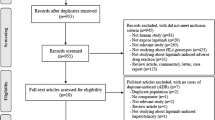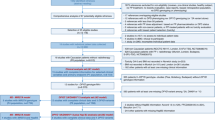Abstract
HLA-DRB1*07:01 allele carriage was characterised as a risk biomarker for lapatinib-induced liver injury in a large global study evaluating lapatinib, alone and in combination with trastuzumab and taxanes, as adjuvant therapy for advanced breast cancer (adjuvant lapatinib and/or trastuzumab treatment optimisation). HLA-DRB1*07:01 carriage was associated with serum alanine aminotransferase (ALT) elevations in lapatinib-treated patients (odds ratio 6.5, P=3 × 10−26, n=4482) and the risk and severity of ALT elevation for lapatinib-treated patients was higher in homozygous than heterozygous HLA-DRB1*07:01 genotype carriers. A higher ALT case incidence plus weaker HLA association observed during concurrent administration of lapatinib and taxane suggested a subset of liver injury in this combination group that was HLA-DRB1*07:01 independent. Furthermore, the incidence of ALT elevation demonstrated an expected correlation with geographic HLA-DRB1*07:01 carriage frequency. Robust ALT elevation risk estimates for HLA-DRB1*07:01 may support causality discrimination and safety risk management during the use of lapatinib combination therapy for the treatment of metastatic breast cancer.
This is a preview of subscription content, access via your institution
Access options
Subscribe to this journal
Receive 6 print issues and online access
$259.00 per year
only $43.17 per issue
Buy this article
- Purchase on Springer Link
- Instant access to full article PDF
Prices may be subject to local taxes which are calculated during checkout




Similar content being viewed by others
References
Geyer CE, Forster J, Lindquist D, Chan S, Romieu CG, Pienkowski T et al. Lapatinib plus capecitabine for HER2-positive advanced breast cancer. N Engl J Med 2006; 355: 2733–2743.
Johnston S, Pippen J, Pivot X, Lichinitser M, Sadeghi S, Dieras V et al. Lapatinib combined with letrozole versus letrozole and placebo for postmenopausal hormone receptor-positive metastatic breast cancer. J Clin Oncol 2009; 27: 5538–5546.
Guan Z, Xu B, DeSilvio ML, Arpornwirat W, Tong Z, Lorvidhaya V et al. Randomized trial of lapatinib versus placebo added to paclitaxel in the treatment of human epidermal growth factor receptor 2-overexpressing metastatic breast cancer. J Clin Oncol 2013; 31: 1947–1953.
Blackwell KL, Burstein HJ, Stornolio AM, Rugo HS, Sledge G, Aktan G et al. Overall survival benefit with lapatinib in combination with trastuzumab for patients with human epidermal growth factor receptor 2-positive metastatic breast cancer: final results from the EGF104900 Study. J Clin Oncol 2012; 30: 2585–2592.
Moy B, Rappold E, Williams L, Kelly T, Nicolodi L, Maltzman JD et al. Hepatobiliary abnormalities in patients with metastatic breast cancer treated with lapatinib. J Clin Oncol 2009; 27 (Suppl): 15s (abstract 1043).
Spraggs CF, Budde LR, Briley LP, Bing N, Cox CJ, King KS et al. HLA-DQA1*02:01 is a major risk factor for lapatinib-induced hepatotoxicity in women with advanced breast cancer. J Clin Oncol 2011; 29: 667–673.
Spraggs CF, Parham LR, Hunt CM, Dollery CT . Lapatinib-induced liver injury characterized by class II HLA and Gilbert's Syndrome genotypes. Clin Pharmacol Ther 2012; 91: 647–652.
Schaid DJ, Spraggs CF, McDonnell SK, Parham LR, Cox CJ, Ejlertsen B et al. Prospective validation of HLA-DRB1*07:01 allele carriage as a predictive risk factor for lapatinib-induced liver injury. J Clin Oncol 2014; 32: 2296–2303.
Parham LR, Briley LB, Li L, Shen J, Newcombe PJ, King KS et al. Comprehensive genome-wide evaluation of lapatinib-induced liver injury yields a single robust genetic signal centered on known risk allele HLA-DRB1*07:01. Pharmacogenomics J 2016; 16: 180–185.
Phillips EJ, Mallal SA . Pharmacogenetics of drug hypersensitivity. Pharmacogenomics 2010; 11: 973–987.
Bharadwaj M, Illing PT, Theodossis A, Purcell AW, Rossjohn J, McCluskey J . Drug hypersensitivity and human leukocytic antigens of the major histocompatibility complex. Annu Rev Pharmacol Toxicol 2012; 52: 401–431.
Illing PT, Vivian JP, Dudek NL, Kostenko L, Chen Z, Bharadwaj M et al. Immune self-reactivity triggered by drug-modified HLA-peptide repertoire. Nature 2012; 486: 554–558.
Monshi MM, Faulkner L, Gibson A, Jenkins RE, Farrell J, Earnshaw CJ et al. Human leukocyte antigen (HLA)-B*57:01-restricted activation of drug-specific T cells provides the immunological basis for flucloxacillin-induced liver injury. Hepatology 2013; 57: 727–739.
Kindmark A, Jawaid A, Harbron CG, Barratt BJ, Bengtsson OF, Andersson TB et al. Genome-wide pharmacogenetic investigation of a hepatic adverse event without clinical signs of immunopathology suggests an underlying immune pathogenesis. Pharmacogenomics J 2008; 8: 186–195.
Heap GA, Weedon MN, Bewshea CM, Singh A, Chen M, Satchwell JB et al. HLA-DQA1-HLA-DRB1 variants confer susceptibility to pancreatitis induced by thiopurine immunosuppressants. Nat Genet 2014; 46: 1131–1134.
Mallal SA, Phillips EJ, Carosi G, Molina JM, Workman C, Tomažič J et al. HLA-B*57:01 screening for hypersensitivity to abacavir. N Engl J Med 2008; 358: 568–579.
Chen P, Lin JJ, Lu CS, Ong CT, Hsieh PF, Yang CC et al. Carbamazepine-induced toxic effects and HLA-B*15:02 screening in Taiwan. N Engl J Med 2011; 364: 1126–1133.
Piccart-Gebhart M, Holmes E, Baselga J, de Azambuja E, Dueck AC, Viale G et al. Adjuvant lapatinib and trastuzumab for early human epidermal growth factor receptor 2-positive breast cancer: results from the randomized phase III Adjuvant Lapatinib and/or Trastuzumab Treatment Optimization Trial. J Clin Oncol 2015; 34: 1034–1042.
Liver Tox: Clinical and research information of drug-induced liver injury: paclitaxel. Available at: http://livertox.nih.gov/Paclitaxel.htm (last accessed 5 April 2017).
US Food and Drug Administration. Drug-induced liver injury: premarketing clinical evaluation. In: Guidance for Industry, 2009. Available at: http://www.fda.gov/downloads/Drugs/GuidanceComplianceRegulatoryInformation/Guidances/UCM174090.pdf (last accessed 5 April 2017).
Barbarino JM, Haidar CE, Klein TE, Altman RB . PharmGKB Summary: very important pharmacogene information for UGT1A1. Phamacogenet Gen 2014; 24: 177–183.
Watkins PB . Idiosyncratic liver injury: challenges and approaches. Toxicol Pathol 2005; 33: 1–5.
Gonzalez-Galarza FF, Takeshita LYC, Santos EJM, Kempson F, Maia MH, da Silva AL et al. Allele frequency net 2015 update: new features for HLA epitopes, KIR and disease and HLA adverse drug reaction associations. Nucleic Acids Res 2015; 43: 784–788.
Lever M, Maini PK, van der Merwe P, Dushek O . Phenotypic models of T cell activation. Nat Rev Immunol 2014; 14: 619–629.
Crown JP, Burris HA, Jones S, Koch KM, Fittipaldo A, Parikh R et al. Safety and tolerability of lapatinib in combination with taxanes (T) in patients with breast cancer (BC). J Clin Oncol 2007; 25 (Suppl): 18S (abstract 1027).
Jones SF, Burris HA, Yardley DA, Greco FA, Spigel DR, Raefsky EL et al. Lapatinib (an oral dual kinase inhibitor) plus weekly or every 3 week paclitaxel. Breast Cancer Res Treat 2004; 88 (Suppl 1): (abstract 1069).
LoRusso PM, Jones SF, Koch KM, Arya N, Fleming RA, Loftiss J et al. Phase I and pharmacokinetic study of lapatinib and docetaxel in patients with advancedcancer. J Clin Oncol 2008; 26: 3051–3056.
Acknowledgements
This study was sponsored by GlaxoSmithKline; Tykerb is an asset of Novartis AG as of 2 March 2015.
Author information
Authors and Affiliations
Corresponding author
Ethics declarations
Competing interests
The authors declare no conflict of interest.
Rights and permissions
About this article
Cite this article
Spraggs, C., Parham, L., Briley, L. et al. Characterisation of the HLA-DRB1*07:01 biomarker for lapatinib-induced liver toxicity during treatment of early-stage breast cancer patients with lapatinib in combination with trastuzumab and/or taxanes. Pharmacogenomics J 18, 480–486 (2018). https://doi.org/10.1038/tpj.2017.39
Received:
Revised:
Accepted:
Published:
Issue Date:
DOI: https://doi.org/10.1038/tpj.2017.39
This article is cited by
-
Genome-wide association study of abnormal elevation of ALT in patients exposed to atabecestat
BMC Genomics (2023)
-
HLA-DRB1*07:01 and lapatinib-induced hepatotoxicity: a systematic review and meta-analysis
The Pharmacogenomics Journal (2020)
-
Hepatotoxicity of New Antitumor Agents
Current Hepatology Reports (2017)



